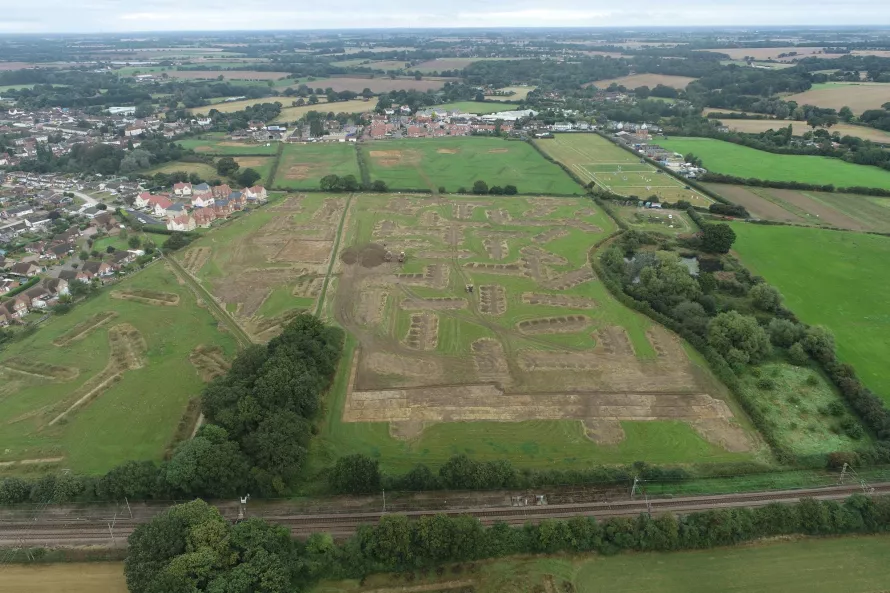The largest of the seven excavation areas we are working on covers the eastern and northern parts of Barrack Field. Over the last couple of weeks, the mechanical diggers have started to remove the topsoil to show the archaeology hidden beneath. The diggers have only had to remove about 20-30cm of soil across this area before finding archaeological remains.
Nick, our archaeological Project Officer, has already started spotting signs of remains which probably relate to the Napoleonic barracks.

We have some possible foundation trenches for walls, along with some potential post-pads. Post-pads are made by digging a small hole and then packing it with stones to create a hard, level surface for supporting a wooden post. Finding these on site tells us that there used to be timber structures here. The wall foundation trenches look like they contain a lot of broken pieces of ceramic building material – known to us as CBM – this tells us that as well as wooden structures, there were brick-built structures here too in the past.

As well as being in the backfill of the foundation trenches, we’re also finding large amounts of CBM spread across the ground. It’s not clear yet what this CBM is doing – is it in a ditch that we can’t quite see yet? Or is it part of a surface? This is something we will be investigating as part of our work on site to try and understand what is going on here. The amount of CBM that we’re already finding tells us that there would have been quite a few buildings here once upon a time. And that they were pretty permanent, long-lived structures if the effort was made to build them out of brick and tile. The broken fragments of CBM are also very ‘fresh’ looking, meaning that they haven’t travelled very farm from their original location.
Next week we will be hosting a group of injured servicemen on site as part of Operation Nightingale. So check back in soon to see how they got on!
Other posts in this collection
Read our latest posts about the archaeological investigations at Weeley.

